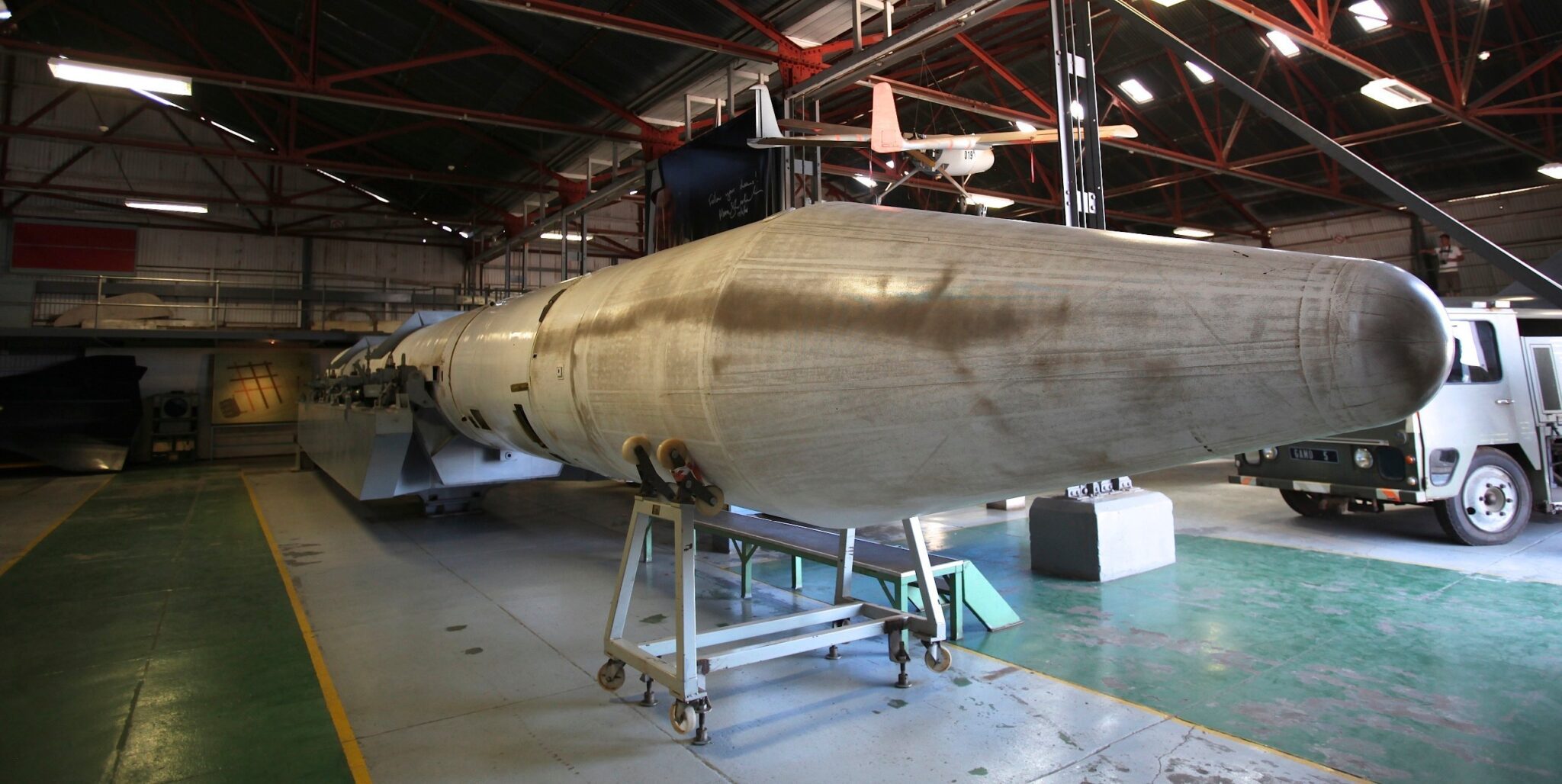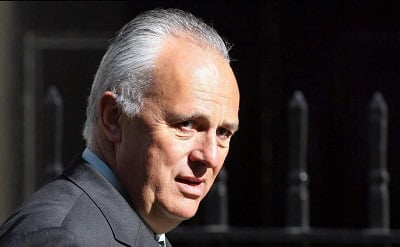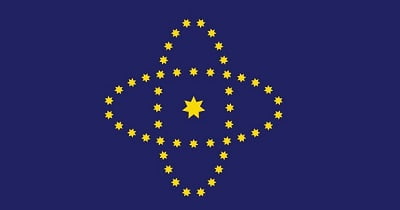On 1 January 1968, the freshly reorganised Sulzer Escher-Wyss AG was rolled out publicly and the company had become streamlined, a move deemed necessary because of several large acquisitions.
This included a close collaboration with Brown Boveri, a group of Swiss electric engineering companies who had also worked for the Nazis, supplying the Germans with some of their U-boat technology used during World War II. Brown Boveri was also described as “defence-related electrical contractors” and would find the conditions of the Cold War arms race to be beneficial to their business.
The merger and reorganisation of these Swiss mechanical engineering giants saw their collaboration pay off in unique ways. During the 1968 Winter Olympics in Grenoble, Sulzer and Escher-Wyss used 8 refrigeration compressors to create tonnes of artificial ice.
In 1969, the two firms combined to help in the building of a new passenger ship named “Hamburg”, the first ship in the world to be fully air-conditioned thanks to the Sulzer Escher-Wyss combination.
In 1967, Klaus Schwab officially burst onto the scene of the Swiss business community and took a lead in the merger between Sulzer and Escher-Wyss, as well as forming profitable alliances with Brown Boveri and others.
In December 1967, Klaus would speak at a Zurich event to the top Swiss machine engineering organisations; the Employers Association of Swiss Machine and Metal Manufacturers and the Association of Swiss Machine Manufacturers.
In his talk, he would correctly predict the importance of incorporating computers into modern Swiss machine engineering, stating that:
“In 1971, products that are not even on the market today are likely to account for up to a quarter of sales. This requires companies to systematically research possible developments and identify gaps in the market. Today, 18 of the 20 largest companies in our machine industry have planning departments that are entrusted with such tasks.
“Of course, everyone has to make use of the latest technological advances, and the computer is one of them. The many small and medium-sized companies in our machine industry take the path of cooperation or use the services of special data processing service providers.”
Computers and data were obviously seen as important to the future, according to Schwab, and this was further projected in the reorganisation of Sulzer Escher-Wyss during their merger.
Sulzer’s modern website reflects this noteworthy change in direction, stating that, in 1968:
“Material technology activities are intensified [by Sulzer] and form the basis for medical technology products. The fundamental change from a machine-building company to a technology corporation starts to become apparent.”
Klaus Schwab was helping to turn Sulzer Escher-Wyss into something more than just a machine building giant, he was transforming them into a technology corporation driving at high speed into a hi-tech future.
It should also be noted that Sulzer Escher-Wyss changed another focus of their business to help them “form the basis for medical technology products,” an area not previously mentioned as a target industry for Sulzer and/or Escher-Wyss.
But technological advancement wasn’t the only upgrade Klaus Schwab wanted to introduce at Sulzer Escher-Wyss, he also wanted to change how the company thought about their business managerial style.
Schwab and his close associates were pushing an entirely new business philosophy which would allow “all employees to accept the imperatives of motivation and to ensure at home a sense of flexibility and manoeuvrability.”
It is here in the late 1960s where we see Klaus begin to emerge as a more public figure. At this time, the Sulzer Escher-Wyss company also became more interested in engaging with the press than ever before.
In January 1969, the Swiss giants setup a public advisory session entitled the “Press Day of the Machine Industry“, which mainly concerned questions on company management. During the event, Schwab would state that companies using authoritarian styles of business management are “unable to fully activate the ‘human capital’”, an argument he would use on many separate occasions during the late 1960s.
Plutonium And Pretoria
Escher-Wyss were pioneers in some of the most important tech in power generation. As the US Department of Energy points out in their paper on Supercritical CO2 Brayton Cycle Development (CBC), a device used in hydro and nuclear power plants, “Escher-Wyss was the first company known to develop the turbomachinery for CBC systems starting in 1939.”
Going on to state that 24 systems were built, “with Escher-Wyss designing the power conversion cycles and building the turbomachinery for all but 3”. By 1966, just before the entrance of Schwab into Escher-Wyss and the start of the Sulzer merger, the Escher-Wyss helium compressor was designed for the La Fleur Corporation and continued the evolution of the Brayton Cycle Development.
This technology was still of importance to the arms industry by 1986, with nuclear powered drones being equipped with a helium-cooled Brayton cycle nuclear reactor.
Escher-Wyss had been involved with manufacturing and installing nuclear technology at least as early as 1962, as shown by this patent for a “heat exchange arrangement for a nuclear power plant” and this patent from 1966 for a “nuclear reactor gas-turbine plant with emergency cooling”. After Schwab left Sulzer Escher-Wyss, Sulzer would also help to develop special turbocompressors for uranium enrichment to yield reactor fuels.
When Klaus Schwab joined Sulzer Escher-Wyss in 1967 and started the reorganisation of the company to be a technology corporation, the involvement of Sulzer Escher-Wyss in the darker aspects of the global nuclear arms race became immediately more pronounced. Before Klaus became involved, Escher-Wyss had often concentrated on helping design and build parts for civilian uses of nuclear technology, e.g. nuclear power generation.
Yet, with the arrival of the eager Mr. Schwab also came the company’s participation in the illegal proliferation of nuclear weapons technology. By 1969, the incorporation of Escher Wyss into Sulzer was fully completed and they would be rebranded into Sulzer AG, dropping the historic name Escher-Wyss from their name.
It was eventually revealed, thanks to a review and report carried out by the Swiss authorities and a man named Peter Hug, that Sulzer Escher-Wyss began secretly procuring and building key parts for nuclear weapons during the 1960s.
The company, while Schwab was on the board, also began playing a critical key role in the development of South Africa’s illegal nuclear weapons programme during the darkest years of the apartheid regime. Klaus Schwab was a leading figure in the founding of a company culture which helped Pretoria build six nuclear weapons and partially assemble a seventh.
In the report, Peter Hug outlined how Sulzer Escher Wyss AG (referred to post-merger as just Sulzer AG) had supplied vital components to the South African government and found evidence of Germany’s role in supporting the racist regime, also revealing that the Swiss government “was aware of illegal deals but ‘tolerated them in silence’ while supporting some of them actively or criticised them only half-heartedly”.
Hug’s report was eventually finalised in a work entitled: “Switzerland and South Africa 1948-1994 – Final Report of the NFP 42+ commissioned by the Swiss Federal Council” which was compiled and written by Georg Kreis and published in 2007.
By 1967, South Africa had constructed a reactor as part of a plan to produce plutonium, the SAFARI-2 located at Pelindaba. SAFARI-2 was part of a project to develop a reactor moderated by heavy water which would be fuelled by natural uranium and cooled using sodium.
This link to developing heavy water for the creation of uranium, the same technology which had been utilised by the Nazis also with the help of Escher-Wyss, may explain why South Africans initially got Escher-Wyss involved. But by 1969, South Africa abandoned the heavy water reactor project at Pelindaba because it was draining resources from their uranium enrichment program that had first begun in 1967.

In 1970, Escher-Wyss were definitely deeply involved with nuclear technology, as seen in a record available in the Landesarchivs Baden-Württemberg.
The record shows details of a public procurement process and contains information about award talks with specific companies involved in the procurement of nuclear technology and materials. The companies cited include: NUKEM; Uhde; Krantz; Preussag; Escher-Wyss; Siemens; Rheintal; Leybold; Lurgi; and the infamous Transnuklear.
The Swiss and South Africans had a close relationship through this period of history, when it was hardly easy for the brutal South African regime to find close allies. By 4 November 1977, the United Nations Security Council had enacted resolution 418 which imposed a mandatory arms embargo against South Africa, an embargo that wouldn’t be fully lifted until 1994.
Georg Kreis pointed out the following in his detailed assessment of the Hug report:
“The fact that the authorities assumed a laisse-faire attitude even after May 1978 comes to the fore in an exchange of letters between the Anti-Apartheid Movement and the DFMA in October/December 1978.
As the study by Hug explicates, the Anti-Apartheid Movement of Switzerland pointed to German reports according to which Sulzer Escher-Wyss and a company called BBC had supplied parts for the South African uranium enrichment plant, and to repeated credits to ESCOM, which also included considerable contributions by Swiss banks.
These assertions led to questions of whether the Federal Council – in light of fundamental support of the UN embargo, ought not to instigate the National Bank to stop authorising credits for ESCOM in the future.”
Swiss banks would help to fund the South African race to nukes and, by 1986, Sulzer Escher-Wyss were successfully producing special compressors for uranium enrichment.
The Founding Of The World Economic Forum
 In 1970, the young upstart, Klaus Schwab wrote to the European Commission and asked for help in setting up a “non-commercial think tank for European business leaders”. The European Commission would sponsor the event as well, sending French politician Raymond Barre to act as the forum’s “intellectual mentor”.
In 1970, the young upstart, Klaus Schwab wrote to the European Commission and asked for help in setting up a “non-commercial think tank for European business leaders”. The European Commission would sponsor the event as well, sending French politician Raymond Barre to act as the forum’s “intellectual mentor”.
Raymond Barre, who was at that time European Commissioner for Economic and Financial Affairs, would later go on to become French PM and would be accused of making anti-Semitic comments while in office.
So, in 1970, Schwab left Escher Wyss to organise a two-week business managerial conference. In 1971, the first meeting of the World Economic Forum – then called the European Management Symposium – convened in Davos, Switzerland.
Around 450 participants from 31 countries would take part in Schwab’s first European Management Symposium, mostly made up of managers from various European companies, politicians, and US academics. The project was recorded as organised by Klaus Schwab and his secretary Hilde Stoll who, later the same year, would become Klaus Schwab’s wife.
Klaus’s European symposium was not an original idea. As writer Ganga Jey Aratnam stated quite coherently in 2018:
“Klaus Schwab’s “Spirit of Davos” was also the “Spirit of Harvard”. Not only had the business school advocated the idea of a symposium. Prominent Harvard economist John Kenneth Galbraith championed the affluent society as well as capitalism’s planning needs and the rapprochement of East and West.”
It was also true that, as Aratnam also pointed out, this was not the first time Davos had hosted such events. Between 1928 and 1931, the Davos University Conferences took place at the Hotel Belvédère, events which were co-founded by Albert Einstein and were only halted by the Great Depression and the threat of looming war.
The Club Of Rome And The WEF
The most influential group that spurred the creation of Klaus Schwab’s symposium was the Club of Rome, an influential think tank of the scientific and monied elite that mirrors the World Economic Forum in many ways, including in its promotion of a global governance model led by a technocratic elite.
The Club had been founded in 1968 by Italian industrialist Aurelio Peccei and Scottish chemist Alexander King during a private meeting at a residence owned by the Rockefeller family in Bellagio, Italy.
Among its first accomplishments was a 1972 book entitled “The Limits to Growth” that largely focused on global overpopulation, warning that “if the world’s consumption patterns and population growth continued at the same high rates of the time, the earth would strike its limits within a century.”
At the third meeting of the World Economic Forum in 1973, Peccei delivered a speech summarizing the book, which the World Economic Forum website remembers as having been the distinguishing event of this historical meeting. That same year, the Club of Rome would publish a report detailing an “adaptive” model for global governance that would divide the world into ten, inter-connected economic/political regions.
The Club of Rome was long controversial for its obsession with reducing the global population and many of its earlier policies, which critics described as influenced by eugenics and neo-Malthusian.
However, in the Club’s infamous 1991 Book, The First Global Revolution, it was argued that such policies could gain popular support if the masses were able to link them with an existential fight against a common enemy.
To that effect, The First Global Revolution contains a passage entitled “The common enemy of humanity is Man”, which states the following:
“In searching for a common enemy against whom we can unite, we came up with the idea that pollution, the threat of global warming, water shortages, famine and the like, would fit the bill. In their totality and their interactions these phenomena do constitute a common threat which must be confronted by everyone together.
“But in designating these dangers as the enemy, we fall into the trap, which we have already warned readers about, namely mistaking symptoms for causes. All these dangers are caused by human intervention in natural processes, and it is only through changed attitudes and behaviour that they can be overcome. The real enemy then is humanity itself.”
In the years since, the elite that populate the Club of Rome and the World Economic Forum have frequently argued that population control methods are essential to protecting the environment.
It is thus unsurprising that the World Economic Forum would similarly use the issues of climate and environment as a way to market otherwise unpopular policies, such as those of the Great Reset, as necessary.
Continued on Next Page…



